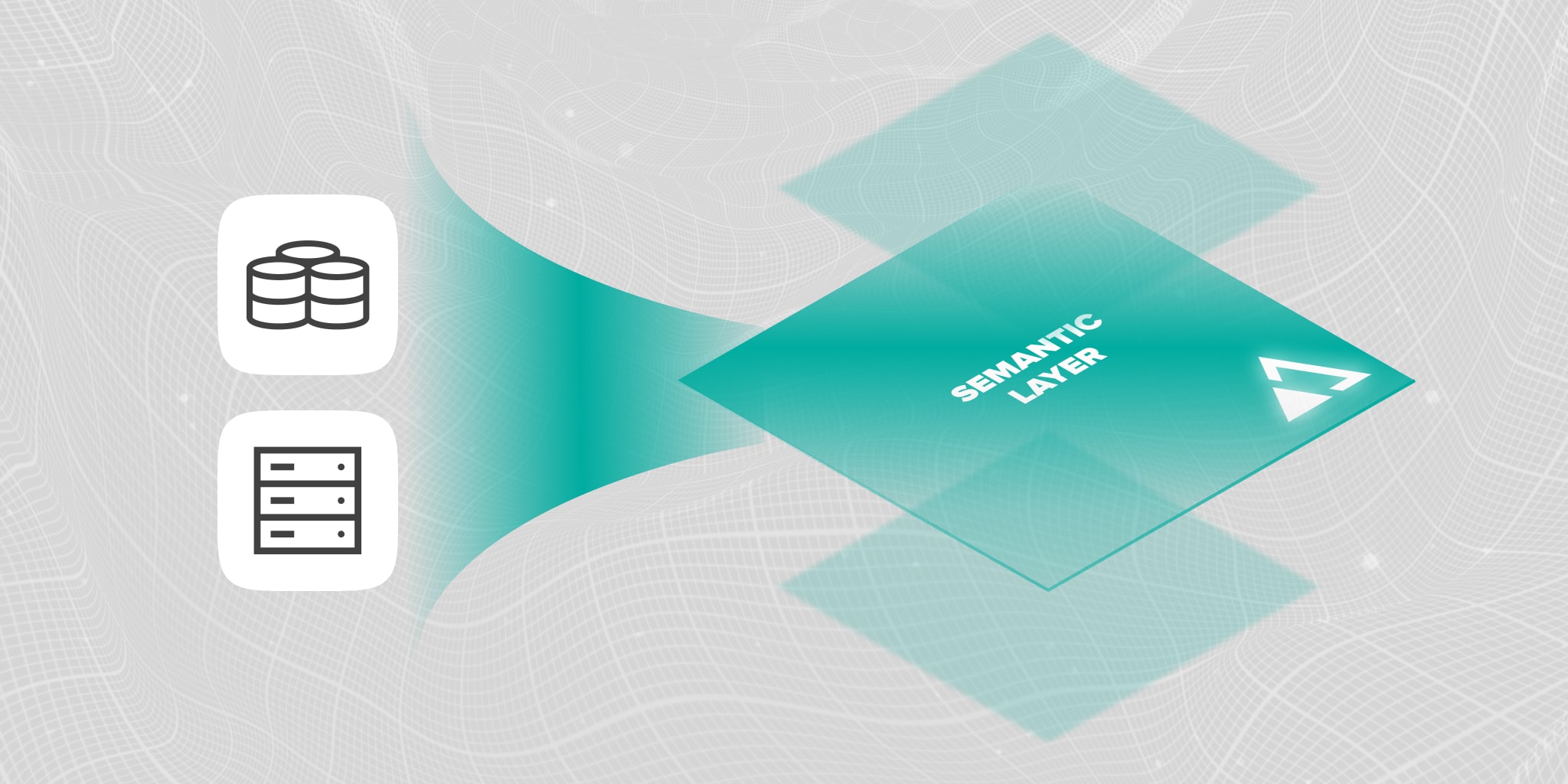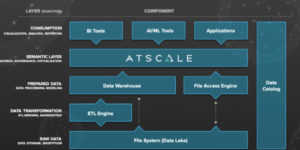February 17, 2021
How To: Blend Data from Salesforce, Google Analytics, and Marketo with the Universal Semantic Layer
Data is everywhere. With dozens of SaaS sales, marketing, and other business applications in use today, companies are witnessing an exponential rise in the volume of data they can access, leverage, and exploit. The same applies to information streams and data lakes. Only blending your SaaS data seamlessly can help you gain actionable insights and achieve sustainable business growth. Let’s take a closer look.

More and more, companies are finding it harder to gather and process data collected by their SaaS sales and marketing applications. Things only get complicated when on-prem and external data sources or tables are added to the mix. Business executives are not always tech-savvy. They are often forced into involving IT experts and data scientists to perform “Excel Gymnastics” to get to the reporting they need.
Old techniques require the pre-aggregating and pre-calculating of data. This means slow response times to ongoing changes in today’s market, which is becoming increasingly dynamic and unstable. To make matters worse, manually constructing complex business queries involves so much work and effort that the data is often already stale at the end of the process.
This is where the Universal Semantic Layer enters the picture.
What is a Universal Semantic Layer?
In a nutshell, a Universal Semantic Layer is a unified business representation of your internal corporate data and business information collected via your SaaS sales and marketing application toolbox. This helps Business Intelligence (BI) users access data with commonly used business definitions, without constantly updating and manipulating complex Excel spreadsheets to extract data.
The Universal Semantic Layer concept has become the biggest driving force behind the evolution of the data warehouse sector in recent years. The amount of data movement required to go the traditional way means slow performance, lags in actionable insights, and also lackluster accuracy. The BI user needs access to simple, consistent, and understandable data, ideally in real-time.
Data is becoming increasingly dispersed, but companies still need to achieve faster reaction times to market developments and elevate business performance metrics. The Universal Semantic Layer does just that. It essentially eliminates the chaos caused by the abundance of raw data and serves as an orchestrator for all implemented sales and marketing SaaS application data.

There’s another way to describe the modern Universal Semantic layer – a single source of truth. With sales and marketing automation tools multiplying and creating complex data streams, BI users now can use the Universal Semantic Layer to simplify their data and extract insights. All they need to do is log into their dashboard and use common business terms to stay informed.
Cross-department visibility is a key business growth requirement. The Universal Semantic Layer allows all stakeholders to access, download, and analyze data for their own specific use. For example, the same lead can be relevant for the Sales and Marketing teams at the same time. Simply put, this is a consistent and reliable way to interpret SaaS data and steer clear of conflicts.
Besides the aforementioned collaboration and usability benefits, the Universal Semantic Layer will also speed up your query performance when looking into massive chunks of data. You no longer need to worry about establishing hierarchies (alternate, parent-child, etc.). Everything is served to you for direct consumption and easy access for faster analysis and planning.
Blend Your SaaS Data with a Universal Semantic Layer
SaaS applications are changing the way companies approach their sales and marketing ops. Salesforce, Google Analytics, and Marketo are altering the entire dynamic, as business processes are being streamlined and automated for faster results. Unfortunately, these applications can prove to be a double-edged sword when it comes to working and syncing with each other.
Cloud OLAP, or multidimensional drill-down cloud analytics, is helping companies reduce infrastructure costs and improve performance. With sales and marketing SaaS applications, the datasets keep coming in and create a wide range of identity conflicts, data overrides, and query performance slowdowns. However, blending all SaaS data into your cloud data model can require some data wrangling.
This is where a dynamic and stand-alone Universal Semantic Layer can prove to be crucial. You can enjoy the inherited benefits of Cloud OLAP, supplemented by enhanced data virtualization without wasting valuable time, money, and resources on operational procedures. There is no data movement whatsoever, making this combo a very potent, effective, and quick one.
Unlocking insights was never easier. Here are three key benefits you’ll achieve.
- Flexible and Unified Data Model – One of the biggest pain points in today’s BI space is the need to involve IT staff and data experts to perform “Excel Gymnastics”. BI users need “a single source of truth” that can be queried with common business terms like ARR and MRR.
- No Need for Data Merging – Multiple datasets from different SaaS applications usually requires data merging, regardless of where the data is stored (on-prem, cloud, etc.). But when you are visualizing these datasets with your Universal Semantic Layer, queries come back faster.
- Conformed Dimension Management – Your data model needs to be compatible with various businesses and speak a variety of languages without sacrificing consistency. Conformed dimension management, a relatively new concept, helps achieve just that. Learn More
Data today comes in silos, including ones created by different SaaS sales and marketing applications. This complexity means that there’s no consistency in business definitions. But a Universal Semantic Layer with built-in conformed dimension management can solve this issue out-of-box by merging these different data sets together in a cohesive and simplified way.
Gain a Competitive Advantage with Your Semantic Layer
Not all Semantic Layers were created alike. Slow speed and inconsistent query response times are common pain points post implementation. Connecting the dots is not as straightforward as it seems. A lot needs to happen under the hood for achieving and enjoying the aforementioned benefits – consistency, simplicity, and speed. That’s why you need a Universal Semantic Layer.
Only a well designed Universal Semantic Layer, that supports advanced cloud-based OLAP technology, can handle multiple data streams for good results. Your solution of choice should be able to handle multiple sales and marketing SaaS applications, while allowing the BI user to run cold queries to get access to vital information on-demand for quick and useful insights.
Last but not least, the move to the cloud is no secret. As per the 2020 Big Data & Analytics Maturity Survey, 61% of respondents currently operate cloud data platforms, and 48% plan on migrating very soon. Some BI vendors still direct data to their private cloud, which means that there is a lot of movement involved. This hurts performance and also doesn’t help with functionality.
Blending your SaaS data into your Universal Semantic Layer has business value because you can optimize your sales and marketing channel ROI. Businesses today need to scale up fast and respond faster to the fluctuating markets, something that is only possible with accurate data that is available on-demand. Boost your data agility and flexibility with a Universal Semantic Layer.

ANALYST REPORT